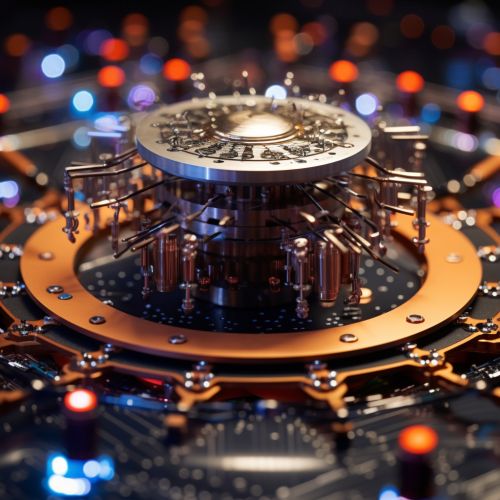Quantum Computing with Quantum Optomechanical Systems under Quantum State Preparation
Introduction
Quantum computing is a rapidly evolving field that exploits the principles of quantum mechanics to process information in ways that classical computers cannot. One of the promising platforms for implementing quantum computing is quantum optomechanical systems, which couple light and mechanical motion at the quantum level. This article will delve into the details of quantum computing with quantum optomechanical systems, focusing on the process of quantum state preparation.


Quantum Computing
Quantum computing is a computational paradigm that utilizes the principles of quantum mechanics to perform computations. Unlike classical computers, which use bits as their basic unit of information, quantum computers use quantum bits, or qubits. Qubits can exist in a superposition of states, allowing them to perform multiple calculations simultaneously. This property, along with entanglement and quantum interference, gives quantum computers their potential for exponential speedup over classical computers.
Quantum Optomechanical Systems
Quantum optomechanical systems are physical systems in which the motion of a mechanical object is coupled to the state of a light field. These systems can be realized in a variety of platforms, including micro-mechanical and nano-mechanical devices, optomechanical crystals, and levitated nanoparticles. The interaction between light and motion in these systems can be harnessed to perform a variety of tasks in quantum information processing, including quantum state preparation, quantum communication, and quantum computation.
Quantum State Preparation
Quantum state preparation is a crucial step in quantum computing and quantum information processing. It involves setting the initial state of a quantum system before a computation or a measurement is performed. The process of quantum state preparation in quantum optomechanical systems can be achieved through various methods, including laser cooling, sideband cooling, and optomechanical squeezing. The choice of method depends on the specific requirements of the quantum task at hand.
Quantum Computing with Quantum Optomechanical Systems
Quantum optomechanical systems offer a promising platform for implementing quantum computing. The strong coupling between light and mechanical motion in these systems can be exploited to perform quantum gate operations, the fundamental building blocks of a quantum computer. Moreover, the ability to cool mechanical modes to their quantum ground state enables the preparation of quantum states with high fidelity. Quantum optomechanical systems also offer the advantage of being compatible with existing optical communication infrastructure, making them suitable for quantum networking and distributed quantum computing.
Challenges and Future Directions
Despite the promising features of quantum optomechanical systems, there are several challenges that need to be addressed for their practical implementation in quantum computing. These include the need for high-quality mechanical resonators, efficient light-mechanical coupling, and robust quantum state preparation techniques. Future research in this field is expected to focus on overcoming these challenges and further developing the capabilities of quantum optomechanical systems for quantum computing and quantum information processing.
